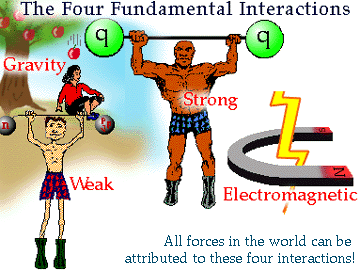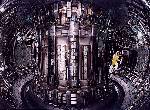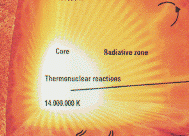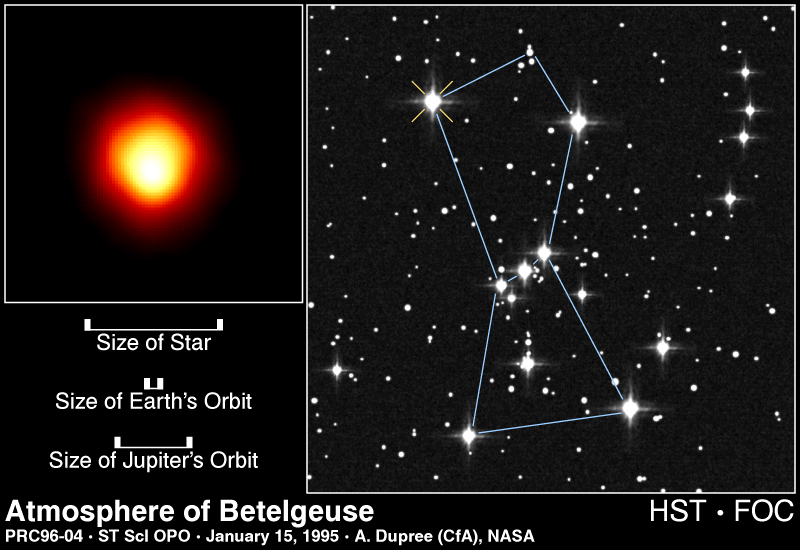The D-T fusion reaction, is the most efficient reaction known in terms of energy released.
Click on image for full size
Image courtesy of Plasma Physics Laboratory
Fusion Reactions
Nuclear fusion is a process where two or more nuclei combine to form an element with a higher atomic number (more protons in the nucleus).
Fusion is the reverse process of nuclear fission. Fusion reactions power the Sun
and other stars.
Fusion releases energy. The energy released is related to Einstein's famous equation, E=mc2.
For a fusion reaction to occur it is necessary to bring the nuclei so close together that nuclear forces become important and "glue" the nuclei together. The nuclear force only acts over incredibly small distances and has to counteract the electrostatic force where the positively charged nuclei repel each other. For these reasons fusion most easily occurs in a high density, high
temperature environment.
On Earth, nuclear fusion was first reached in the explosion of the
Hydrogen bomb.
In a non-desctructive manner, fusion has also been reached in different
experimental devices
aimed at studying the possibility of producing energy in a controlled fashion.
You might also be interested in:

The nucleus of an atom has protons and neutrons in it. Each element (like carbon or oxygen or gold) has a different number of protons in its atoms. Scientists have a special name for the number of protons
...more
The interactions in the Universe are governed by four forces (strong, weak, electromagnetic and gravitational). Physicists are trying to find one theory that would describe all the forces in nature as
...more
In the Hydrogen bomb the explosion of a nuclear fission charge (atomic bomb) produces the temperature and density so fusion can occur. This fusion results in a sudden release of a large amount of energy
...more
There are several experiments where nuclear fusion reactions have been achieved in a controlled manner (that means no bombs are involved!!). The two main approaches that are being explored are magnetic
...more
The solar core is made up of a really hot and dense gas (in the plasma state). The temperature of 15 million kelvins (27 million degrees Faranheit) keeps the core at a gaseous state. The core is where
...more
A plot of the binding energy per nucleon vs. atomic mass shows a peak atomic number 56 (Iron). Elements with atomic mass less then 56 release energy if formed as a result of a fusion reaction. Above this
...more
When the temperature in the core of a star reaches 100 million degrees Kelvin fusion of Helium into Carbon occurs. Oxygen is also formed from fusion of Carbon and Helium together when the temperature is
...more















